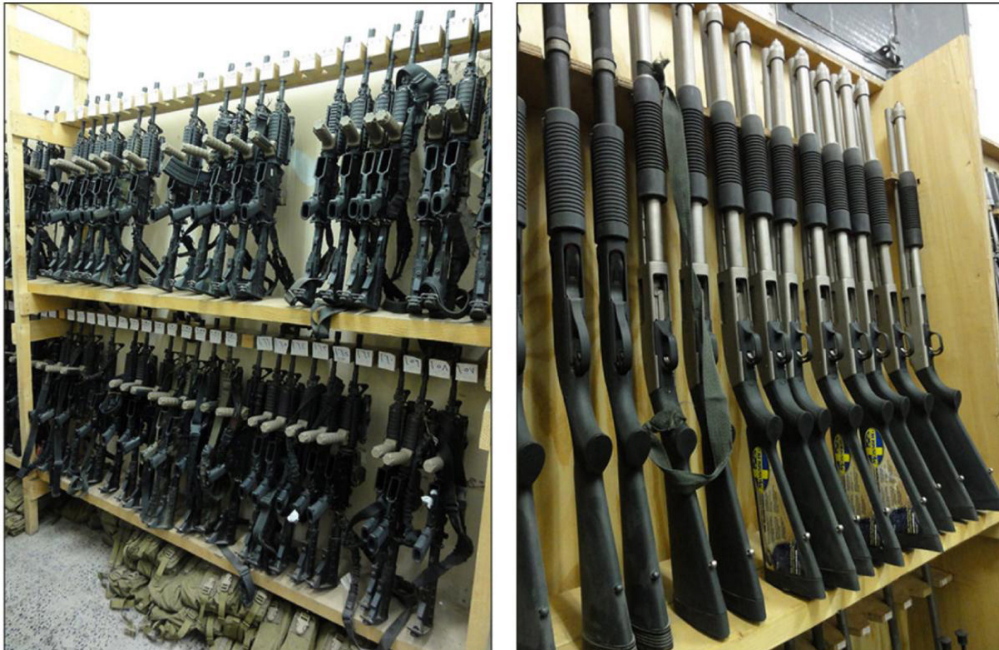WASHINGTON — The Pentagon is unable to account for more than $500 million in U.S. military aid given to Yemen amid fears that the weaponry, aircraft and equipment is at risk of being seized by Iranian-backed rebels or al-Qaida, according to U.S. officials.
With Yemen in turmoil and its government splintering apart, the Defense Department has lost its ability to monitor the whereabouts of U.S.-donated small arms, ammunition, night-vision goggles, patrol boats, vehicles and other supplies. The situation has grown worse since the United States closed its embassy in Sanaa, the capital, last month and withdrew many of its military advisers.
In recent weeks, members of Congress have held closed-door meetings with U.S. military officials to press for an accounting of the arms and equipment. Pentagon officials have said they have little information to go on and that there is little they can do at this point to prevent the weapons and gear from falling into the wrong hands.
‘COMPLETELY COMPROMISED’
“We have to assume it’s completely compromised and gone,” said a legislative aide on Capitol Hill, who spoke on the condition of anonymity because of the sensitivity of the matter.
U.S. military officials declined to comment for the record. A defense official, speaking on the condition of anonymity under ground rules set by the Pentagon, said there was no hard evidence that U.S. arms or equipment had been looted or confiscated. But the official acknowledged that the Pentagon had lost track of the items.
“Even in the best-case scenario in an unstable country, we never have 100 percent accountability,” the defense official said.
Yemen’s government was toppled in January by Shiite Houthi rebels, who receive support from Iran and have strongly opposed U.S. drone strikes in Yemen. The Houthis have taken over many Yemeni military bases in the northern part of the country, including some in Sanaa that were home to U.S.-trained counterterrorism units. Other bases have been overrun by fighters from Al-Qaida in the Arabian Peninsula.
As a result, the Defense Department has halted shipments to Yemen of about $125 million in military hardware that were scheduled for delivery this year, including unarmed Scan Eagle drones, other types of aircraft and Jeeps. That equipment will be donated instead to other countries in the Middle East and Africa, the defense official said.
Although the loss of weapons and equipment already delivered to Yemen would be embarrassing, U.S. officials said it would be unlikely to alter the military balance of power there. Yemen is estimated to have the second-highest gun ownership rate in the world, ranking behind only the United States, and its bazaars are well stocked with heavy weaponry. Moreover, the U.S. government restricted its lethal aid to small firearms and ammunition, brushing aside Yemeni requests for fighter jets and tanks.
TRAINING STRATEGY
In Yemen and elsewhere, the Obama administration has pursued a strategy of training and equipping foreign militaries to quell insurgencies and defeat networks affiliated with al-Qaida. That strategy has helped to avoid the deployment of large numbers of U.S. forces, but it has also met with repeated challenges.
Washington spent $25 billion to re-create and arm Iraq’s security forces after the 2003 U.S.-led invasion, only to see the Iraqi army easily defeated last year by a ragtag collection of Islamic State fighters who took control of large parts of the country. Just last year, President Obama touted Yemen as a successful example of his approach to combating terrorism.
Send questions/comments to the editors.



Success. Please wait for the page to reload. If the page does not reload within 5 seconds, please refresh the page.
Enter your email and password to access comments.
Hi, to comment on stories you must . This profile is in addition to your subscription and website login.
Already have a commenting profile? .
Invalid username/password.
Please check your email to confirm and complete your registration.
Only subscribers are eligible to post comments. Please subscribe or login first for digital access. Here’s why.
Use the form below to reset your password. When you've submitted your account email, we will send an email with a reset code.